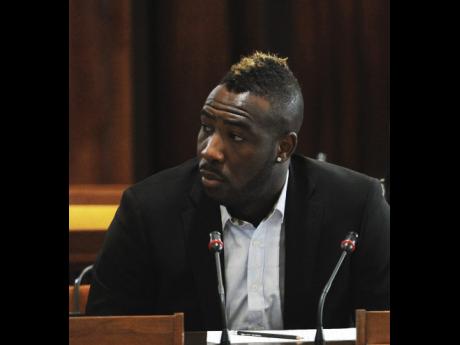I didn't understand system - Russell tries to explain whereabouts violation
West Indies cricketer AndrÈ Russell took the witness stand in his whereabouts violation hearing at the Jamaica Conference Centre yesterday.
However, the hearing, which was scheduled to end yesterday, will resume on Tuesday with the cross-examination of the all-rounder.
JADCO's executive director Carey Brown and whereabouts officer Tajae Smith also gave testimonies.
Russell's lawyer, Patrick Foster, tried to prove that his client took all possible steps to file his whereabouts information but found it difficult, with his compact schedule and limited knowledge and training, to update his whereabouts on JADCO's ADAMS website.
"I tried to put in my whereabouts information but could not do it properly," Russell stated.
Russell said that he made frequent trips to JADCO to update his info and was usually assisted by staff, including Smith.
However, during his cross-examination, JADCO's representative, Lackston Robinson, questioned Russell's knowledge of JADCO's rules, guidelines, and consequences with regard to whereabouts filing and tried to prove that Russell knew of his filing failures and the laws that govern such situations. Robinson argued that the cricketer should have acted more responsibly in order to avoid his present predicament.
But Foster continued to focus on JADCO's blunder in their correspondence with the West Indian all-rounder, who said that at one point, he grew confused with communiquÈs from JADCO after repeated attempts to update his whereabouts through his agent, Will Quinn, and West Indies Cricket Board representative Judith Lue.
Foster argued that the anti-doping agency did very little to educate and train cricketers on updating their whereabouts information on the ADAMS website.
Russell had enlisted Lue to assist with his whereabouts filing in the April to June quarter, while in India competing, with the assistance of Smith, who, in his testimony, admitted giving Lue instructions on updating the system.
It was noted that Russell contacted Smith to retrieve his log-in details before passing that information on to Lue, who then called Smith for guidance as it relates to navigating the submission system.
Russell did his whereabouts submission for January to March on February 17.
However, Foster noted that although Lue completed the April to July update, it was not recorded on the system. As a result the commission erred by sending the cricketer two filing failures in the same quarter.
He noted that the filing failure from July to September did not clearly state that Russell was in danger. But he did receive notification from JADCO on July 6 to file his whereabouts by July 13, with a deadline extension to the 24th.
THE EXPLANATION
"The rules are clear: Where there are two filing failures in one quarter, notification must be clear so the athlete knows he's under threat," Foster remarked.
"The complainant does not have a proper threshold on the conduct and methods of the system, so there is no proper basis for a second filing failure," he insisted.
Russell received another email on the 20th, but he only believed it to be an extension of his first filing failure deadline.
On his return home, he visited JADCO and updated his information, but on reaching home, he was presented with a package regarding his filing failures. Russell shared that his reason for not meeting the September 9 deadline was because Quinn told him to focus on cricket as he (Quinn) would take care of it.
Foster also highlighted the fact that the cricketer had done numerous doping tests in other countries around the world.
Earlier, JADCO executive director Brown testified via telephone, however, his testimony was delayed for about an hour after JADCO representative Robinson protested Foster's team's use of the telephone, which is not allowed.
However, after getting consensus panel chairman, Hugh Faulkner allowed Foster and his team to continue using their communication devices.

